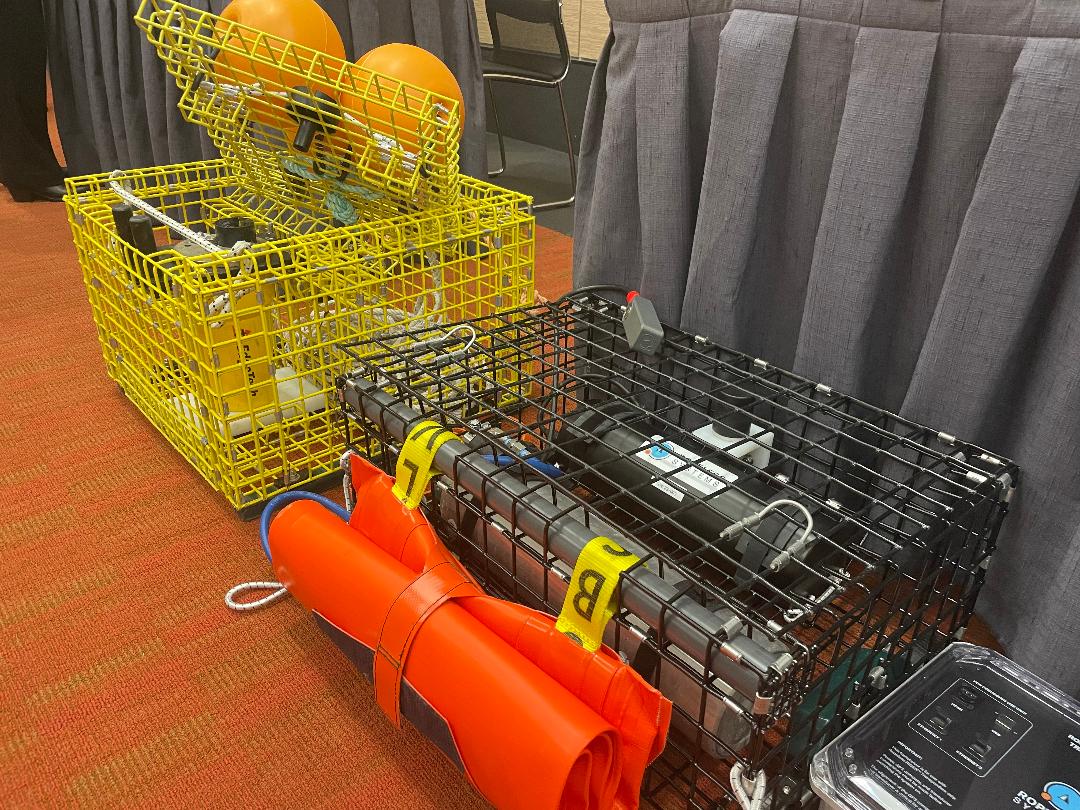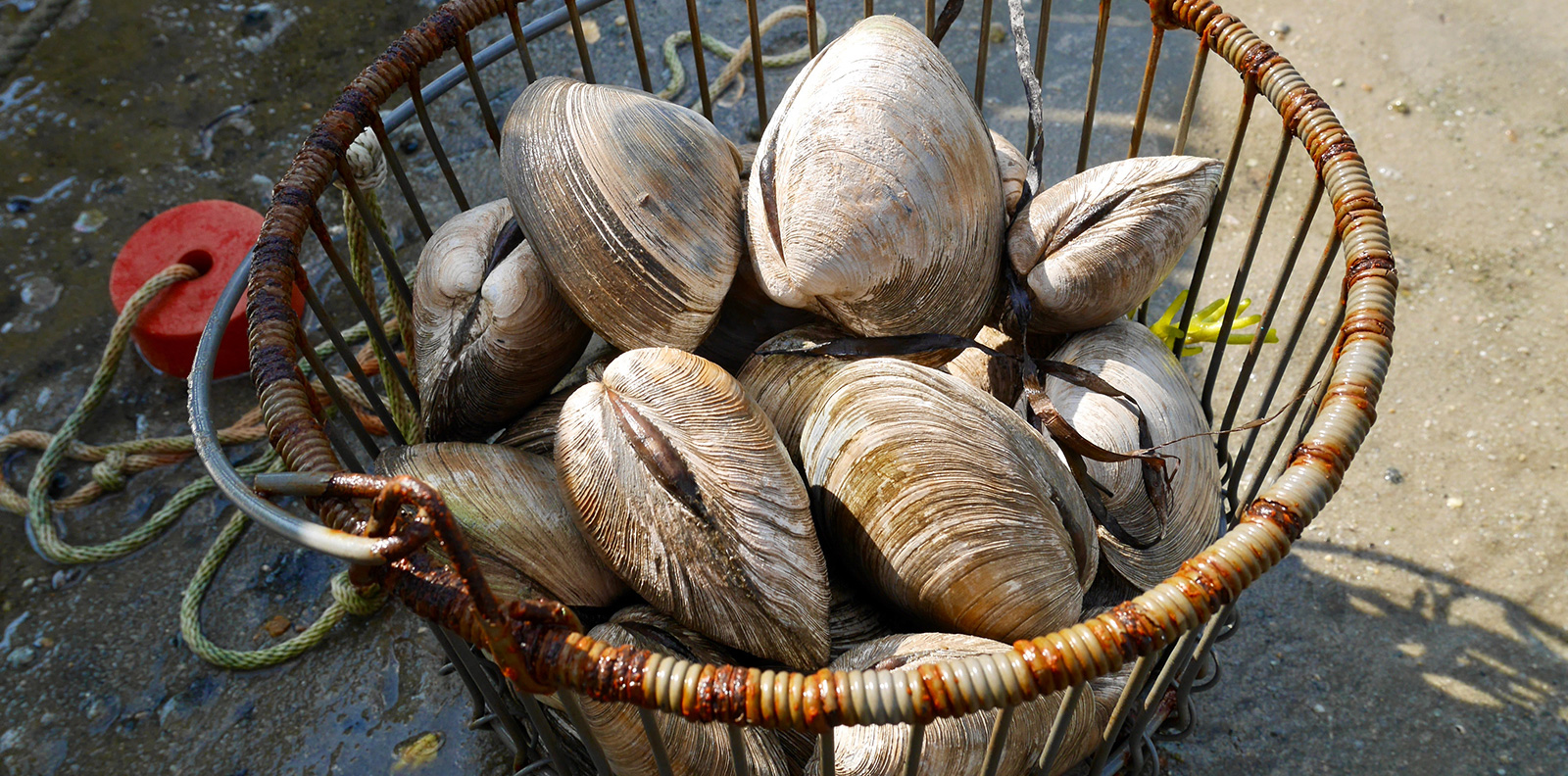Solution to Lobster Shell Disease Remains Elusive
October 3, 2018
Despite more than 20 years of declining lobster populations in southern New England and extensive studies of the shell disease that is a major factor in their decline, scientists are still struggling to provide definitive answers to help restore hope to those working in the local lobster fishery.
A new study of lobsters along the eastern Connecticut coast has found that the disease is linked to warming water temperatures, while progress is slow in efforts to identify probiotics to counteract the disease and to better understand why so many lobsters are blind.
“Epizootic shell disease first appeared around 1996 and became quite prevalent around 1999, and it continues to be prevalent,” said Maya Groner, who conducted the Connecticut study as a post-doctoral researcher at the Virginia Institute of Marine Science. “It’s been a challenge to figure out what the pathogen associated with the disease is. The best evidence suggests it may be a suite of bacteria that chews away at the carapace, but that suite of bacteria changes over the course of the disease.”
Her study found that the increased prevalence of the disease stems from warmer water temperatures that induce the lobsters to molt their shells earlier than usual.
Using data on 200,000 lobsters collected over 37 years in Waterford, Conn., as part of biological monitoring near the Millstone Nuclear Power Station, Groner found that about 80 percent of male lobsters have the disease during warm years, with females contracting the disease at a slightly lower rate.
“Molting their shell resets their health,” she said. “If they don’t molt, there’s no way they can recover. But now that they’re molting earlier in the spring, the molt happens before they’re even challenged with the disease.”
The earlier molt allows the disease to progress longer than if the lobsters molted in summer, as they typically do.
Groner found that for every 1.8-degree increase in the average temperature of the bottom water in May, lobsters molted about six days earlier. In early-molting years, disease prevalence doubled by September.
“It’s very consistent with trends we’ve seen with other marine diseases,” Groner said. “Organisms at the southern part of their range — like lobsters in Long Island Sound — are limited by temperature. They’re at their thermal tolerance limit. So as temperatures increase, they’re becoming stressed and less able to cope with diseases.”
University of Rhode Island fisheries researcher Kathy Castro has been studying lobsters for more than two decades, and she decided to look for a solution to help lobsters recover from the disease even though the precise cause of the disease is still uncertain. She is collaborating with URI colleagues who are studying probiotics on oysters.
“Why can’t we identify good bacteria that normally occur on lobsters, take the bad bacteria off, and repopulate their shells with good bacteria?” she wondered. “In essence, the idea works, but we don’t know what’s the right bacteria, how do we treat the lobsters, how often, and how to do it in a reasonable time frame.”
In a laboratory setting, Castro’s URI colleagues David Nelson and David Rowley isolated probiotics from healthy lobsters and tested them against what they believe may be the “bad bacteria.” The strategy looked promising. Initial trials on adult lobsters were positive as well. But it may not be practical.
“Our initial idea was that lobstermen could treat the lobsters on their boat,” Castro said. “But it’s hard to do; you have to do it in a lab. Maybe we still haven’t identified the right probiotic. And are we even working with the right pathogens?”
While that work is continuing, Castro is investigating why about half of the lobsters she has tested are functionally blind.
“That’s a more concerning issue to me than shell disease,” she said. “My question is, is it related to shell disease. The lobster’s endocrine control system is located in their eye stalk, so if a lobster is blind, is it molting incorrectly, and is that contributing to the disease.”
Castro said a colleague in Virginia thinks the cause of the blindness may be manganese, a neurotoxin that harms optic nerves and is released from sediments under low-oxygen conditions. But studies are just now under way.
“In my mind, it has to be related to shell disease. That’s my gut feeling,” Castro said.
One of the challenges to finding the answers has been inadequate research funding, Castro said, so much of the research is being done piecemeal.
“I really wish there was something fundamentally easy that we could do to solve all these problems,” she said. “That would be my greatest dream. But I know it takes time. And as much as we know about lobsters, there’s a lot more we don’t know.”
Rhode Island resident and author Todd McLeish runs a wildlife blog.




There is a fundamentally easy way to do to minimize the vulnerability to shell disease. My research suggests that a deficiency in CaCO3 resources to produce a healthy new cuticle [Kunkel et al. 2018] is a mojor cause of vulnerability to ESD. That deficiency in CaCO3 is based on the ocean acidification which makes CO3^-2 harder to extract from the ocean water. This leads to less CO3^-2 deposited as CaCO3 in the endocuticle which I see as a CaCO3 reserve for the next molt. If there is not enough of this endocuticle-CaCO3 the lobster can not resorb enough prior to molting to provide adequate resource for the newly molted cuticle’s hardening. This syndrome creates a newly molted lobster with a thin calcite layer which makes it vulnerable to ESD.
One ‘simple’ solution to this lack of CaCO3 would be to create an artificial bait to replace the acidifying herring bait currently used preferentially. An artificial bait made from algal gel (2-4% agar) suffused with CaCO3 granules, some cheap nutritious protein, and suffused with Robert Bayer’s essence of herring might be a welcome replacement from the smelly ‘salted-herring’ dolled out by lobstermen to the normally shellfish eating lobsters. The fetid herring bait has been shown by research to only be attractive for 24 hours while the yet to be perfected artificial bait could use the perfected time release technology of our rich drug industry to doll out Bob’s essence of herring for a reasonable trap soak time. The disappearing herring might even recover and I could get a more local source of my favorite herring in wine sauce. The local alkalinization of the bottom with the CaCO3 in the bait might delay the acidification that is already underway. The direct feeding of the lobsters with CaCO3 may provide them with a source to produce a robust CaCO3 store in their endocuticle which they will use to produce an invulnerable cuticle when they next molt. This will also produce a new industry using seaweed to produce the agar basis of the bait and use cheap CaCO3 and the cheapest protein we can engineer into the bait. Bob Bayer has toyed with this idea I am sure, but it needs a Maine entrepreneur hero to develop the bait and perhaps extend the life of the lobster fishery in Maine. Otherwise we will be soon buying all our lobsters from our good neighbors in Canada.
This artificial bait would be part of the routine of lobster fihing. The sternman would have a less smelly job of dolling out the dissolving package of bait from a dry box of bait (instead of a smelly tote of herring) . The bait would be engineered to last the soak time. One could even engineer different time release schedules for different soak times. A new industry (artificial lobster bait) for Maine would be created.
This would be more a routine of fishing instead of trying to paint ‘healthy bacteria’ onto an already vulnerable IMHO population of lobsters.
Last week in leaving a restaurant in the Portland area I passed by a dinning party and saw a cooked lobster with rather severe ESD on their plate. This is presumably our near future come to pass … acceptance of ESD as normal? South of Cape Cod it did not last long.
Kunkel Joseph G, Melissa Rosa, Brian Tarbox, Sabine Hild, Michael J. Jercinovic, Ali N. Bahadur (2018). Recognizing Incipient Epizootic Shell Disease Lesions in the Carapace of the American Lobster, Homarus americanus, H. Milne Edwards 1837. Bull Mar Sci 94(3):863-886..